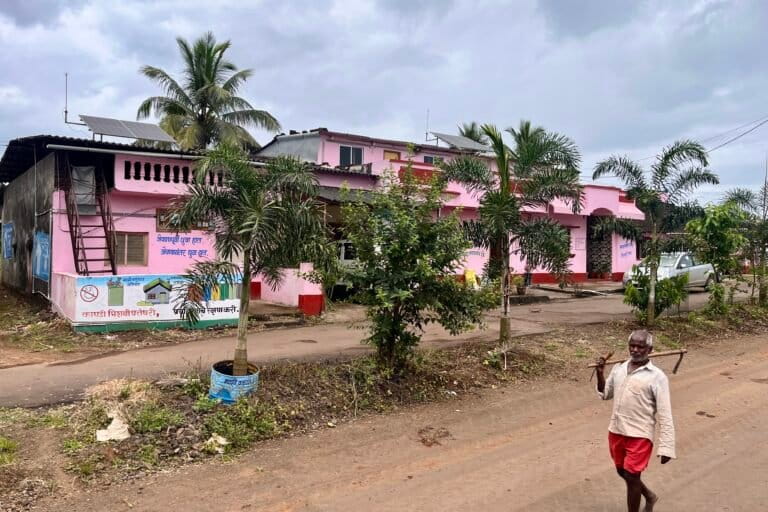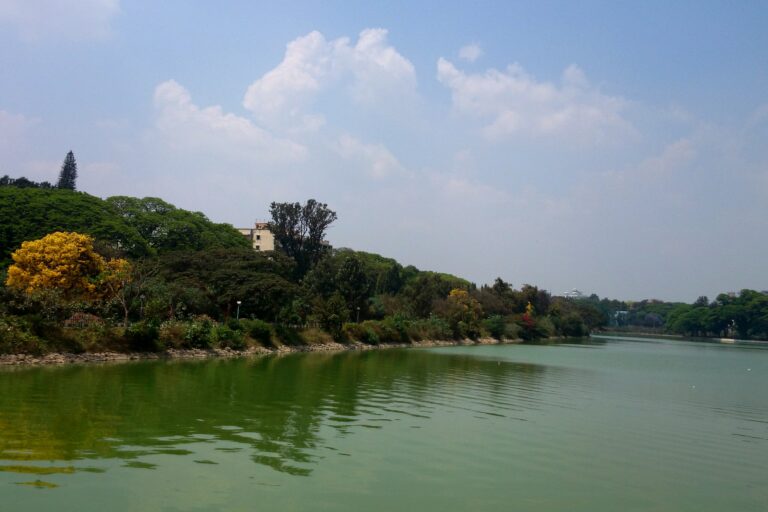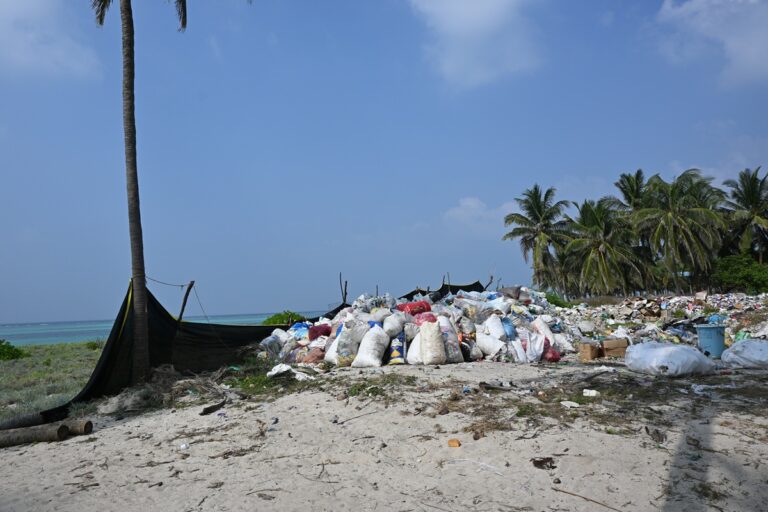- The concept of Lifestyle For Environment or LiFE is meant for the whole country. However, there is a greater focus on the urban population than the rural.
- While the urban population in India contributes to climate change by consuming more energy and adding more greenhouse gases to the environment, and consuming without recycling, the rural population contributes to environmental degradation indirectly by exploiting natural forest resources.
- There is a need for more focus on rural livelihood options to reduce the dependency of the rural communities on the forests. The empowerment of rural women should become a priority because they are disproportionately impacted by the effects of climate change.
- The views in the commentary are that of the authors.
The concept LiFE or Lifestyle For Environment, was introduced by the Indian Prime Minister during the 26th United Nations Climate Change Conference of the Parties (COP26) in Glasgow last year. LiFE promotes an environment-conscious lifestyle that focuses on ‘mindful and deliberate utilisation’ instead of ‘mindless and destructive consumption’. Recently, this theme became the central focus again, when Antonio Guterres, Secretary General of the United Nations, visited India.
The climate conference, COP27, being held at Egypt, is almost at its end. With climate change as the central theme at the summit, LiFE is again in the spotlight. The genesis of this concept is not restricted to any continent, and India, as a developing country, is trying to take the lead in tackling the impacts of climate change.
The vision of LiFE is for all humans to live a lifestyle that is in tune with the planet and does not harm it. Those who live such a lifestyle are called ‘pro-planet people’. Mission LiFE borrows from the past, operates in the present, and focuses on the future.
The main objectives enumerated in the LiFE concept are — saving energy at home, cycling and using public transport instead of driving, eating more plant-based food and wasting less, and leveraging our position as customers and employees to demand climate-friendly choices.
LiFe places emphasis on the urban population
The ‘pro-planet people’ idea is a good one, and the step taken by India on a global platform is indeed a milestone. India seems committed to be a problem-solver.
However, after in-depth analysis, we found that the current objective of LiFE is better suited for the urban population because urban people have access to air conditioners, freezers and other energy-consuming equipment. They have higher standards of living and can afford personal cars. The urban residents are the ones who waste food more than the rural residents. All these activities directly or indirectly influence climate change.

The India’s rural population, however, does not consume much energy because they do not have access to modern energy-consuming equipment. Also, they use public transport most of the time and do not waste food because the food is not available in excess in the first place, to waste. So, the question then arises – has the rural population been adequately covered under the mission LiFE?
Ground report from the rural areas of India
Rural communities are at the risk of being disproportionately affected by the direct impacts of climate change, because of their high dependence on natural resources. Rural communities also have a limited capacity to invest in public infrastructure, thereby decreasing their preparedness for climate impacts. This situation, however, does not mean that the rural population has no influence on environment degradation.
Socio-economic data collected from rural India revealed that the rural population contributes less to global warming than urban population. The rural population contributes to environmental degradation differently.
The Wildlife Institute of India, Dehradun, conducted a socio-economic study in the northern landscape of Jharkhand. This study is a part of an integrated wildlife action plan to be prepared for the protected area of the Koderma and Hazaribagh districts of Jharkhand. The study team collected the socio-economic data from all the villages in and around Jharkhand’s protected forest patches, covering a total of more than 40 villages. The team found that the local communities depend entirely on the forest for survival. Although they have a sense of environmental conservation, they know that forests have a significant stake in climate change control. But due to the lack of alternative options for their livelihood, they have to depend on forest resources. Sometimes these dependencies and their intensities lead to forest exploitation.
On an average, a household collects 20-30 kilograms of firewood from the forest on a daily basis. It amounts to 700-800 kilograms of monthly firewood consumption for a household. These wood logs add to air pollution.

The rural communities are prone to poverty as well, due to the unavailability of alternative livelihood options. Agriculture activities and livestock farming are their primary sources for income generation. Here, it becomes imperative to note that the change in seasonal rainfall impacts many places in India. The paucity of rainfall has resulted in failure of crop production. Rural communities in Jharkhand opine that they have a high conservation ethics and that they understand the importance of a forest. However, the reality is that an empty stomach cannot practice conservation. They can’t focus on conservation, before their basic needs are met.
Read more: [Commentary] Innovations needed in fossil fuel subsidy to promote clean cooking in India
The rural communities studied also articulated that family members are increasing in number every day, but they have no extra income for their survival. This condition forces them to depend on the forest resources, and sometimes they are forced to consume more than the optimum productivity of the natural resources.
Data collected to assess the local inhabitants’ dependency on the forest from the protected area of Bihar and Saranda forest of Jharkhand, revealed that the level of forest exploitation is high. Local tribal people had clear-felled the forest patches for agriculture practices. Natural forest was burnt to construct a residence in one area. In the Saranda forest of Jharkhand, there was a large-scale illegal cutting of a Sal forest, and local mafia were involved in these activities too.
While the urban population in India contributes to climate change by consuming more energy, adding more greenhouse gases to the environment, and consuming without recycling, the rural population mainly contributes indirectly through the loss of natural forest resources.
The way ahead
India has emerged as a global leader and has even started mentoring several other economies about the solutions to tackle different environmental issues. India’s commitment to reach 40% of installed electric capacity from non-fossil fuel-based sources has been achieved nine years ahead of schedule. The target of 10% ethanol blending in petrol has been achieved five months ahead of the November 2022 target. India will reach carbon neutrality by 2070 as part of a five-point action plan.
The LiFE concept, however, has been designed at a country level, and the objectives enshrined under this concept do not efficiently cover the rural population.
The government’s focus must be on rural livelihood options to reduce the dependency of the rural communities on the forest. Rural women should be the central focus and their empowerment should become a priority because they are the first ones, disproportionately impacted by climate change. The forest department can also generate livelihood options with the support of local communities, which would benefit both parties.

There is also a need for some policies at the state levels. To reduce the dependency on fuel wood and subsequently improve the rural women’s health status, the central government initiated the Ujjawala scheme in which gas cylinders with stoves were provided to the rural women free of cost, and the effect of this scheme was quite successful. However, no concrete policies were formulated regarding refilling the gas cylinder, which again forced the women to gravitate to fuel wood. NGOs and corporates can also come forward to sustain rural communities. The noble concept of LiFE can be fulfilled only when it is covered holistically.
Dipak Anand is Senior Research Associate, Wildlife Institute of India, Dehradun. Gopi G.V. is Scientist-E, Wildlife Institute of India, Dehradun.
Read more: Government survey paints a different picture of Ujjwala scheme claims
Banner image: A cleanliness drive in Mangaluru. Photo from cleanliness drive by Ramakrishna Mission, Mangaluru/Flickr.













